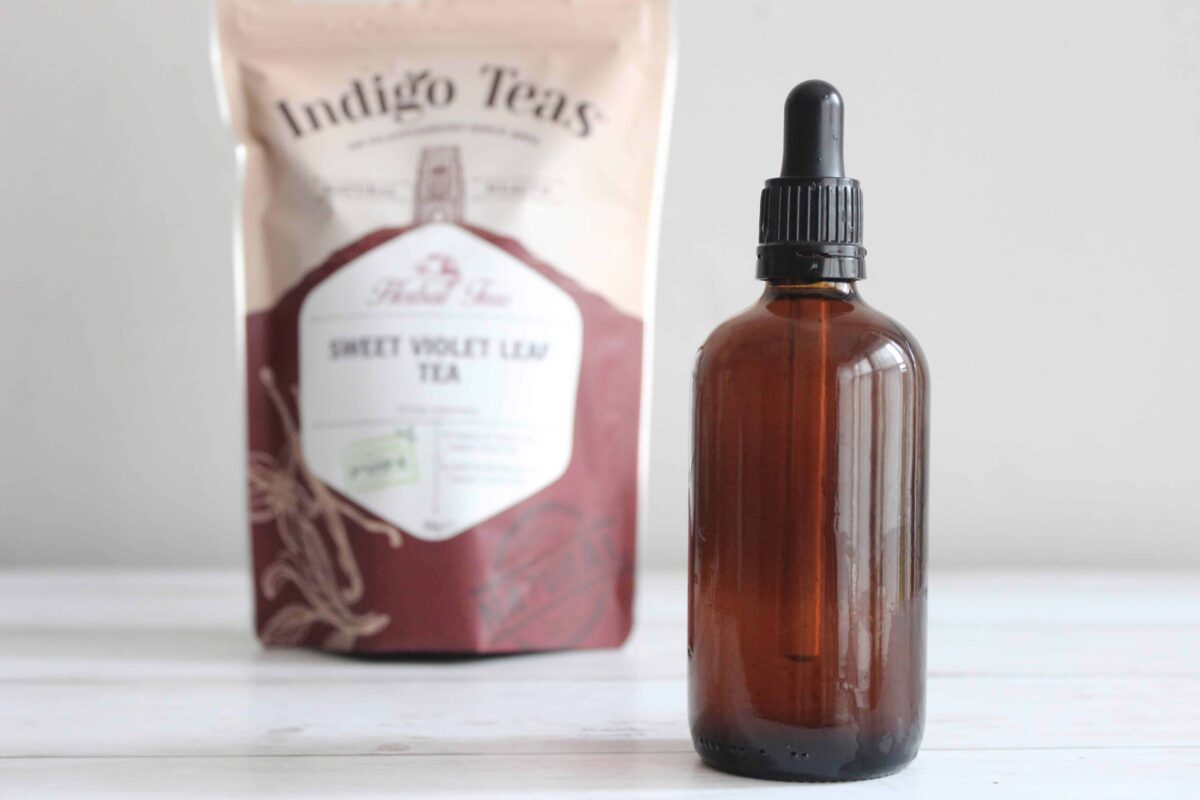Fully sanitise your glass jar, lid, and amber glass dropper bottle.
If you’re using fresh violets, rinse the flowers and leaves to remove visible dirt. Pat them dry with a tea towel or paper towel. You don’t want to have a lot of water in your tincture, so if you can’t get them dry with a towel, let them air dry before using them in the tincture.
Use your knife to chop up the flowers and leaves. This is to maximise the surface volume of the plant that will be exposed to the alcohol.
If you’re using fresh violets, fill a glass jar ¾ of the way full. If you’re using dried flowers, fill the glass jar ½ of the way full to leave room for the flowers to absorb the alcohol.
Pour alcohol over the leaves and flowers until everything is completely submerged.
Add a lid to your container and shake the jar to ensure everything is covered in alcohol. Add a date and label to your jar so that you remember when you made the tincture and what it is.
Set the jar in a dark, cool place away from direct sunlight for 6-8 weeks. Letting the tincture sit longer will result in a more concentrated final product - I let some of my tinctures sit for 6 months!
Aim to shake the jar 3-4 times per week to ensure everything remains submerged in the alcohol.
After 6-8 weeks, use cheesecloth, a fine mesh strainer, or a coffee filter to strain off the tincture. If you used fresh leaves and flowers, I’d recommend using a coffee filter to ensure that any residual dirt is removed from the final tincture.
Use a funnel to add the tincture into your glass dropper bottles. Date and label the tincture so you know what it is.
